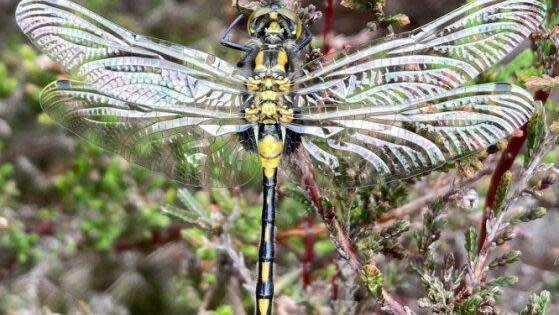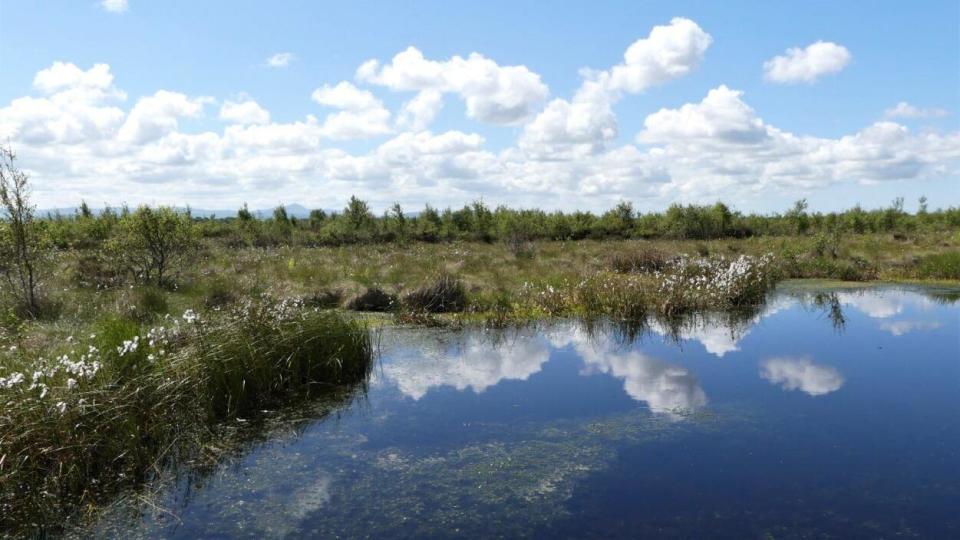White-faced darter dragonflies up at nature reserve

Large numbers of a rare dragonfly have been recorded at a nature reserve, as part of a project to restore its peat bogs.
Cumbria Wildlife Trust said 328 white-faced darter dragonflies had emerged in the first day of its monitoring season at Drumburgh Moss, on the Solway Coast.
The insect, which has a distinctive white face and red or yellow markings on its body, is only found at a handful of areas in England.
The trust described the result as "fantastic" and said it was "really encouraging" with the numbers set to rise this season.

The trust said in recent years "extensive restoration work" has been carried out at Drumburgh Moss to repair its peat bogs.
This has caused water levels to rise and allowed bog vegetation to grow, including quantities of floating Sphagnum moss, which the white-faced darters need for laying their eggs, it explained.
The trust added it has worked with the British Dragonfly Society since 2019 to reintroduce the species but it "was not expecting such high numbers" this year.
Jack Dryden, from Cumbria Wildlife Trust, said: "The larvae usually have two-year life cycles, and two years ago the weather was quite bad during their emergence.

"This year’s numbers suggest that they are clearly more resilient than we give them credit for,” he continued.
Mr Dryden described it as a "fantastic result" and said it was a "really encouraging number for the first day of our monitoring season".
In 2023, the total count was 627, completed in seven weeks of monitoring. The total figure in 2022 was 124.
David Clarke, from the British Dragonfly Society, said volunteers complete weekly surveys at the reserve.
"It involves crawling around on our hands and knees collecting the empty skins of the aquatic larvae that have been left behind when the adult dragonflies emerge.
"This gives us the minimum number of dragonflies that have emerged from the pools. It’s impossible to find them all, so there are likely to be more than we actually count," he added.
He Clarke said although it was a "a lot of effort for just one species of insect", it brought together a lot of people to "try and reverse the declining trend for wildlife in this country".
Follow BBC Cumbria on X (formerly Twitter), Facebook and Instagram. Send your story ideas to northeastandcumbria@bbc.co.uk.

